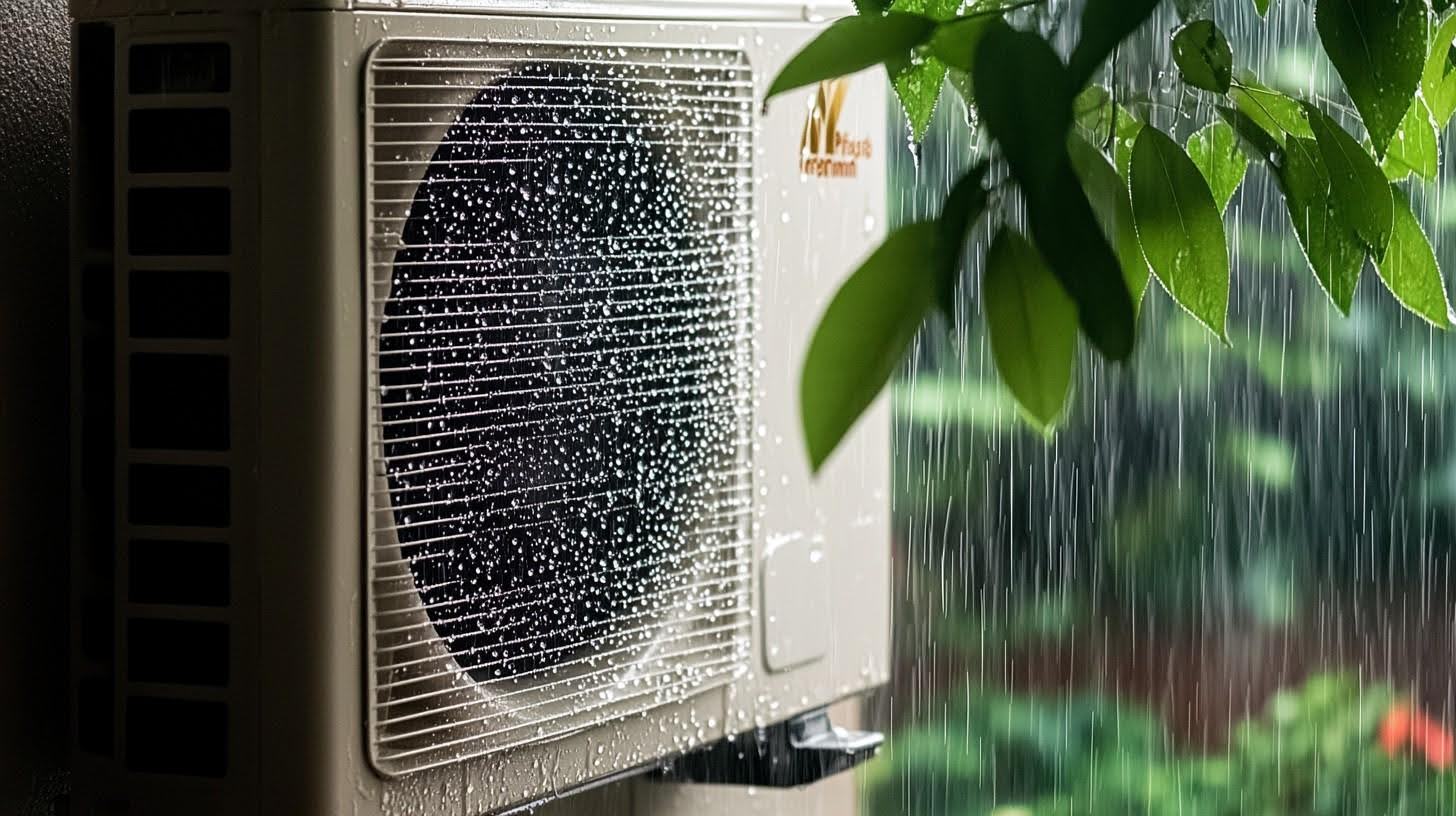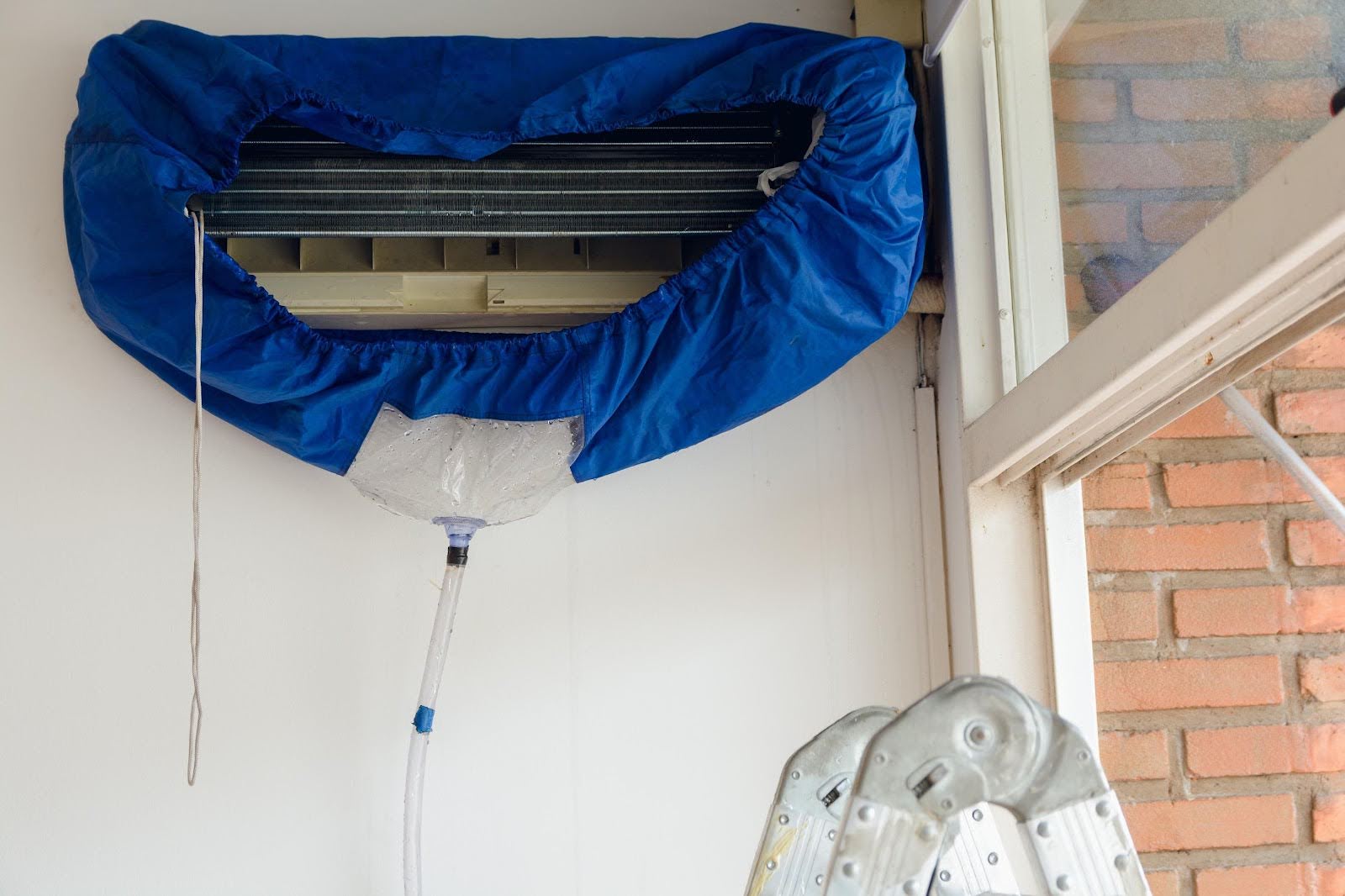No products in the cart.
Spring is that time of year when everything starts blooming, but it also brings rain, humidity, and lots of shifting temperatures. If you use a mini split system for heating and cooling, now’s the perfect time to give it a little attention. Spring weather, especially the rainy kind, can challenge your mini split’s performance if you’re not prepared.
In this post, we’ll walk you through how to get your mini split ready for spring and why a little seasonal maintenance can help you stay cool, dry, and efficient all season long. New to mini splits? Learn more about how they work in What Is a Ductless Mini-Split Air Conditioner?
Why Spring Rain Affects Mini Split Systems
Most people don’t think of rain as a threat to their HVAC system, but moisture can cause problems if water starts pooling around your outdoor unit or humidity builds up inside your home. When the rain is nonstop or paired with pollen, mold, and plant growth, things can get messy fast.
Your mini split’s outdoor condenser works hard to push heat and moisture out of your home. If that unit is covered in debris, surrounded by wet plants, or clogged with gunk, it won’t work as efficiently. And inside the house, excess spring humidity can make rooms feel warmer than they are, even if the thermostat says otherwise. Discover why mini splits excel in these conditions in Why a Ductless Mini-Split Might Just Be Your Home’s New Best Friend.
That’s why spring maintenance and prep are key, especially if you live in a humid climate or an area with heavy seasonal rainfall.
How to Protect Your Outdoor Unit During Heavy Rain
Your outdoor mini split condenser is built to handle the elements, but it still needs your help to
stay in top shape when the rain starts pouring. Here’s how to protect it:
- Clear away leaves, branches, or plant overgrowth around the unit so air can flow freely.
- Make sure the unit is mounted or sitting on an elevated base, especially if your yard tends to flood or collect puddles. Standing water can lead to corrosion or short circuits over time. Need installation tips? Check out The Ultimate Guide to Tools and Accessories for Installing and Maintaining Ductless Mini-Split Air Conditioners.
- Check that your drain lines are clear and properly angled so water flows away from the house and unit.
- Trim any nearby plants or grass to prevent blockages and discourage insects or rodents from nesting nearby.
- Avoid covering the unit tightly with tarps or plastic unless it’s specifically designed for HVAC systems, trapped moisture can cause more harm than good. Find compatible covers in our Accessories Category.
A clean and well-ventilated outdoor unit, like those in a 12,000 BTU Ductless Mini-Split Air Conditioner, is better prepared to handle the season’s wet conditions.
Running Your Mini Split in Humid Spring Weather
Even if it’s not hot outside yet, spring humidity can still make your home feel uncomfortable. That’s where your mini split’s dry mode becomes your secret weapon.
Dry mode is perfect for those humid but not hot days. It reduces moisture in the air without cranking the temperature way down. This helps prevent mold growth, improves indoor air quality, and makes your home feel cooler without overworking the system. Learn more about air quality benefits in Air Quality and Efficiency of a Ductless Mini-Split AC.
You can also:
- Use the timer or schedule feature to run the mini split during the most humid parts of the day, especially with systems like a Multi-Zone Mini-Split Air Conditioner.
- Keep doors and windows closed when running your unit to avoid bringing in more moisture.
- Use ceiling fans to help move air gently and distribute the drier air evenly.
By staying on top of spring humidity, you’ll keep your home fresher and your mini split running more efficiently. For additional cost-saving strategies, explore Simple Tips to Save on Air Conditioning Costs with Your Ductless Mini-Split System.
Spring Maintenance Tips
Here’s a quick spring checklist to make sure your mini split is ready for the season:
- Clean or replace air filters inside the air handlers. Dirty filters reduce airflow and trap moisture.
- Wipe down the air handler vents and nearby walls to remove dust and prevent mildew from forming.
- Inspect your drain lines to make sure water is flowing freely and not backing up.
- Check your remote or app settings to confirm schedules, temperature settings, and modes are properly adjusted for the season.
- Schedule a professional tune-up if it’s been over a year since your last one. A technician can clean the coils, check refrigerant levels, and spot any early issues before summer hits. Not sure if it’s time for a tune-up? Read To Fix or Not to Fix: Navigating the Ductless Mini-Split Conundrum for guidance.
A little maintenance now can prevent bigger problems later, especially for systems like a Ceiling Cassette Mini-Split.
Why This Matters
Spring is one of the most unpredictable seasons when it comes to weather. One week it’s cool and rainy, the next week it’s hot and sticky. Your mini split can handle all of it, but only if you give it the care it needs.
By prepping your system for the rainy season, you’ll improve its performance, extend its life, and save money by avoiding emergency repairs or energy waste. Plus, your home will feel more comfortable and less muggy even on those damp spring days. Want to explore top-performing units? Check out 10 Best Mini-Splits for Summer 2024 for inspiration.
Need help getting your mini split ready for spring?
Reach out to the team at Payless Mini Split. Whether you need a new unit, a tune-up, or expert advice on how to protect your system this season, we’ve got you covered.






